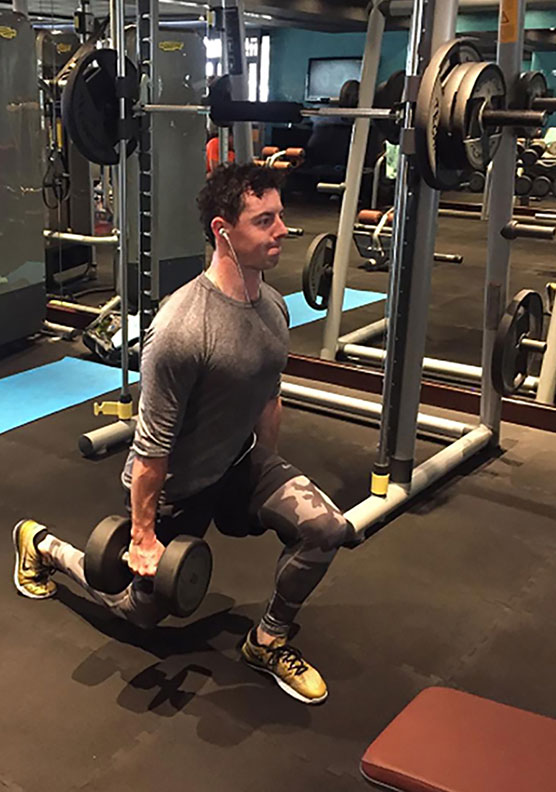When Golf Channel pundit, Brandel Chamblee, took a recent swipe at Rory McIlroy’s passion for the gym, the internet lit up as the former world number one stridently defended himself and his approach to the game on social media. Circuitously, the subject matter of the squabble opened some old wounds for me, taking me back to a road trip as a 20-year-old to the New South Wales town of Bega. In company with my old mate and future PGA Tour player, Neale Smith, we passed the majority of the time obsessing about golf.
It was all reasonably formulaic, until Neale decided to go deep into left field, isolating himself on a limb so brittle that there was little hope of salvation. You see, back then there were some things you could say with conviction and get away with. But what you couldn’t do was assert that in the future, a golfer would come along and dominate the game by virtue of his power game, born out of embracing weight and strength training.
This was of course ridiculous, and I told him so. It was common knowledge that if you lifted weights you would become muscle bound. Your swing would be destroyed, not to mention your touch around the greens.
It was an incontrovertible truth of the game that golf and weights didn’t mix, so golfers with any pretention to maximising their potential avoided muscularity.
The assertion was vigorously defended, and we agreed to disagree. However, I was supremely confident time would prove me right. It’s fair to say though with the benefit of hindsight, I could eat the world’s largest slice of humble pie and still not adequately redeem myself.

Chamblee’s dig at McIlroy found its genesis in a comparison with the man who broke the mould when it came to incorporating strength training into his training regime. While Chamblee’s fascination with Tiger Woods borders on obsessive, it isn’t just he who has raised questions about the effect overtraining and poor technique has played in Tiger’s serious injury issues in recent years.
No-one did more to change the perception of the relationship between golf and strength than Woods. Almost as soon as he arrived on the US PGA Tour, he embarked on a weights program that transformed his body. The skinny, whippet-like figure of 1996 quickly became a thing of the past as his upper body and torso began to show the effects of his dedication to training.
If the effects on his body were notable, so too were his performances on course. Woods’ power set him part, his length from the tee regularly reducing par 5s to par 4s, and in the process allowing him to dominate the tour in a way not since seen since Byron Nelson in the 1940s.
His formula for success didn’t go unnoticed, and it wasn’t long before personal trainers started showing up on tour, becoming an integral part of the entourages of the world’s top golfers.
If imitation is the sincerest form of flattery, then Tiger deserves to be well pleased with the level of adulation directed his way by those that have followed in his footsteps.
But for pundits like Chamblee, concerns about Woods’ extreme regime – which included training with Navy Seals, running in army boots and high weight loading, and the stress that such excesses placed on his knee, back and achilles –provide a cautionary tale for those looking to emulate him.
On a slow news day, four-time Major winner McIlroy became an easy target. The evolution of specific golf exercise continues apace, and the type of training performed now by most elite golfers is core, speed and flexibility related. Given the demands of the modern game and the distance advantages that accrue from being able to generate swing speed in excess of 190km/h, it is hard to imagine how anyone can hold their place at the pinnacle of the professional game without a commitment to physical training.
On current evidence, McIlroy isn’t backing down, nor moving away from his pursuit of excellence on and off the course. For a better understanding of just how impressive he is, check out his social media channels, and his statistics off the tee this year.
And though it pains me greatly to have to say it, Smithy, you were right.




